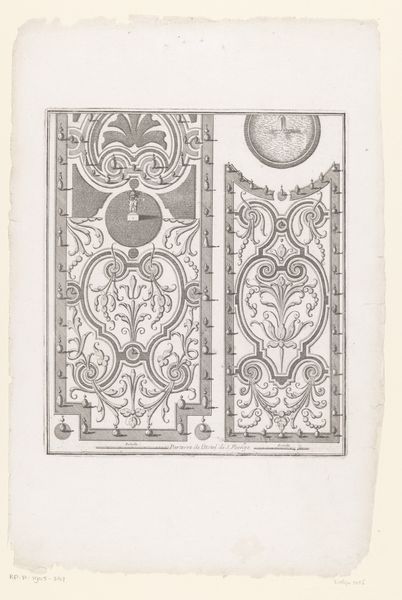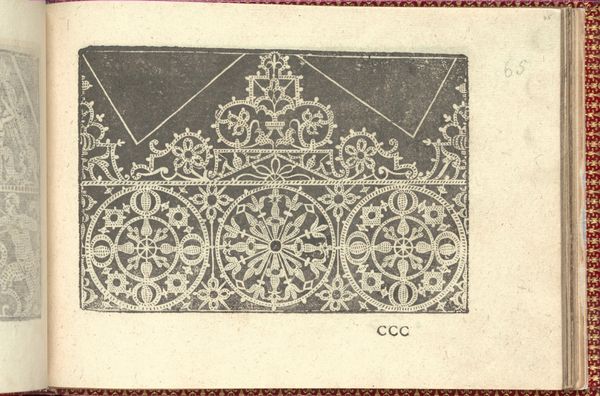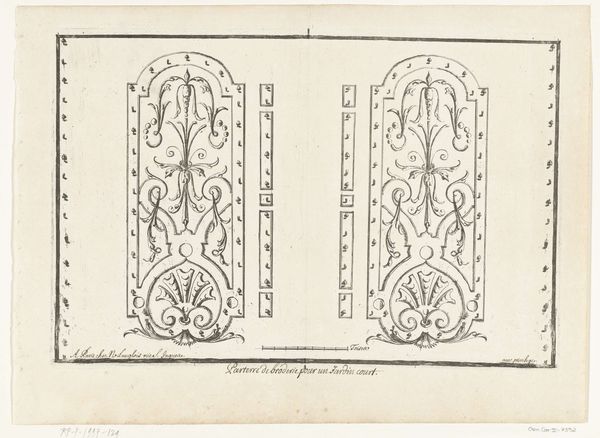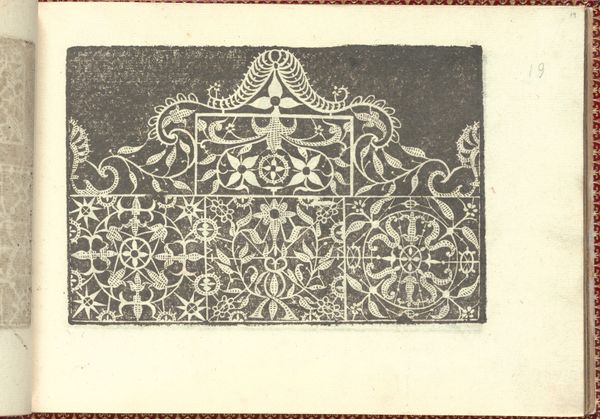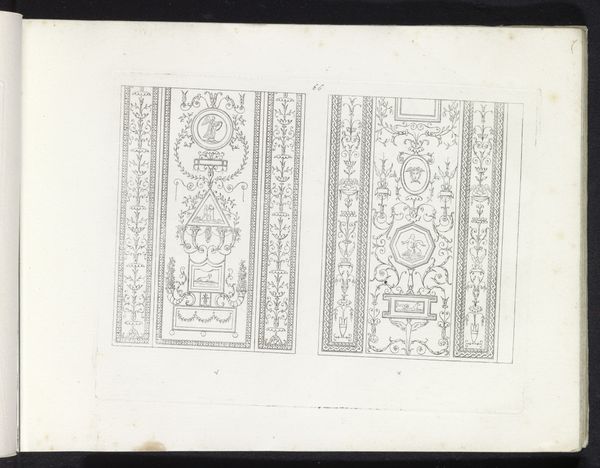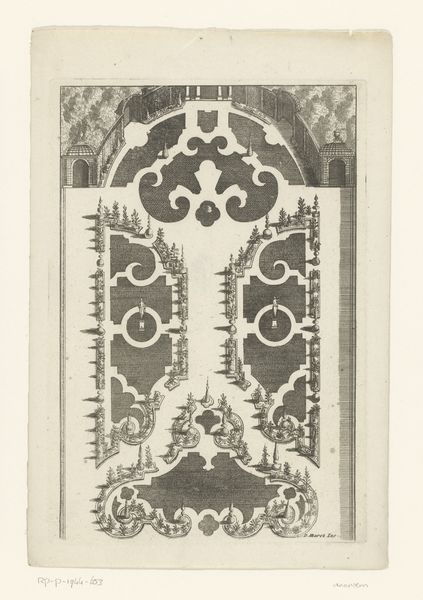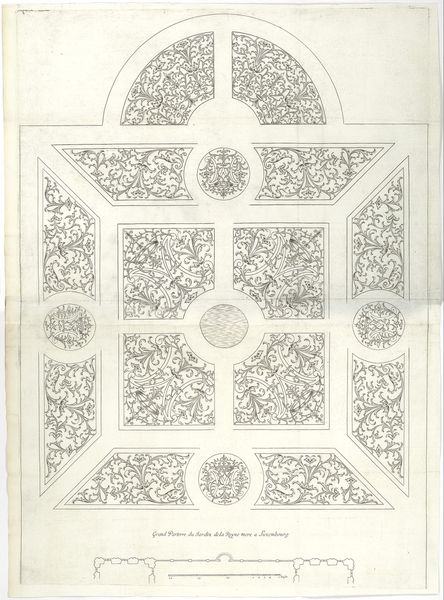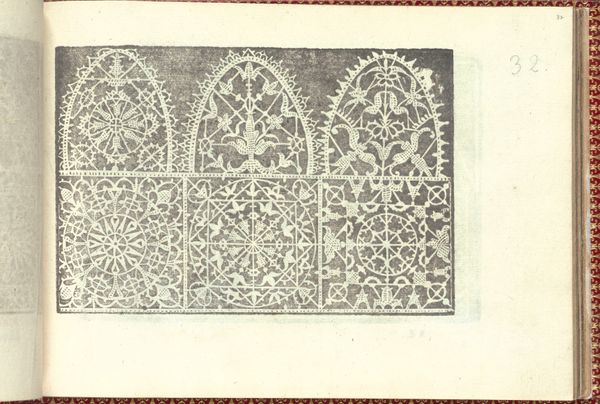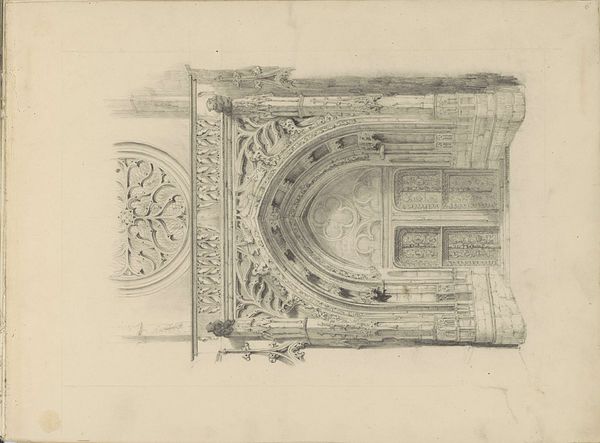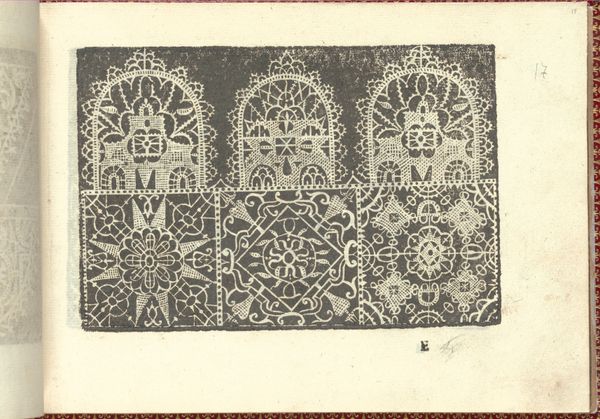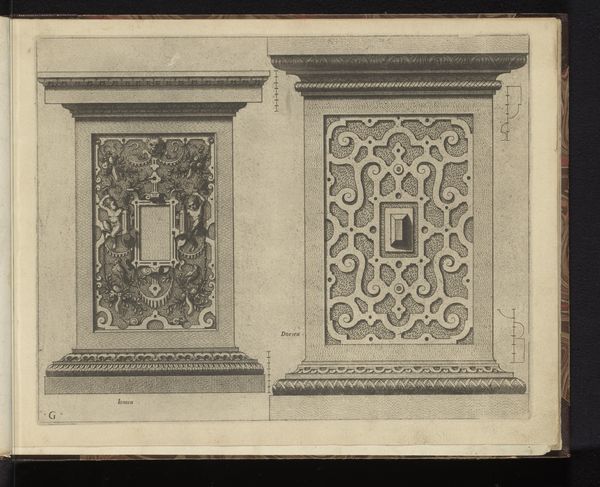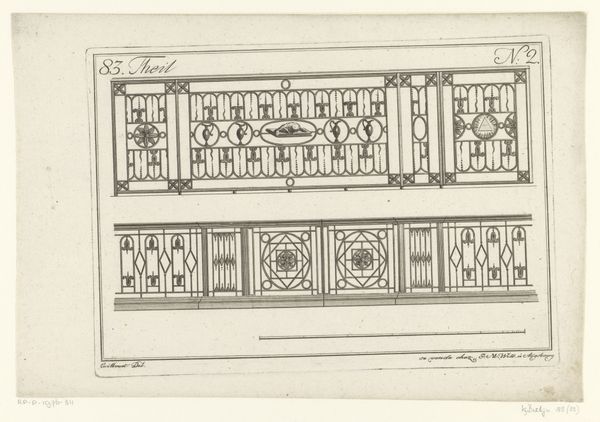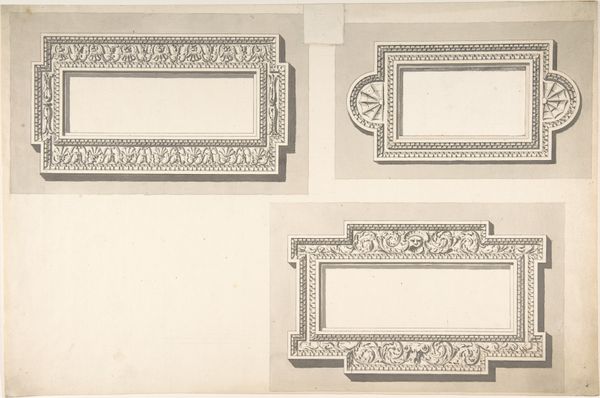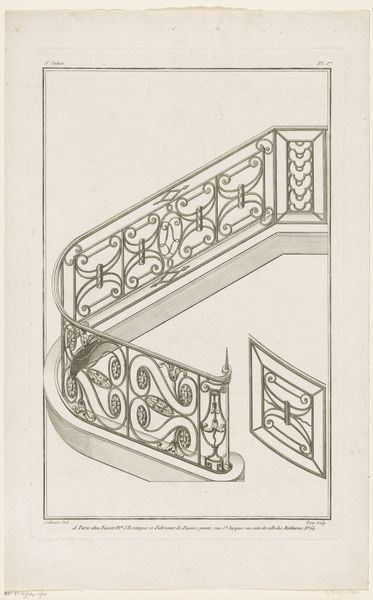
print, engraving, architecture
#
baroque
# print
#
landscape
#
geometric
#
line
#
engraving
#
architecture
Dimensions: height 242 mm, width 325 mm
Copyright: Rijks Museum: Open Domain
Editor: So, here we have "Plattegrond van tuin in Versailles met Latona-fontein", created sometime between 1650 and 1700 by an anonymous artist. It’s an engraving, a sort of architectural blueprint of a garden. What strikes me is how meticulously planned and geometrical the space is. What story does it tell you? Curator: This print offers a glimpse into the political theater of Louis XIV’s Versailles. Consider how this "blueprint," designed for public consumption, presents an image of absolute control. The geometric layout isn't just about aesthetics; it's a demonstration of power over nature, mirroring the King’s ambition to control all aspects of French society. What kind of message do you think it sent to visiting dignitaries or even the general public who might have seen such images? Editor: That makes sense. So, the perfect symmetry, the lines – it's less about beauty and more about broadcasting dominance. Like saying, "I control everything, even nature!" Curator: Exactly. The Latona Fountain, centrally placed, celebrates the Sun King through mythology. It links Louis to Apollo, god of light and reason. The highly formalized gardens reinforced this association and propagated an image of divinely sanctioned rule. Do you think such propagandistic imagery remains relevant today? Editor: Absolutely. I think the intent behind shaping public perception, the deliberate crafting of an image of authority, that's still very much present in political imagery and architecture. It is thought-provoking how the past echoes in our contemporary culture. Thanks! Curator: Indeed. Looking closely at even a garden plan helps us understand how art and architecture have historically functioned to solidify and communicate power. The social impact, whether intended or not, is a relevant topic to analyze the artworks.
Comments
No comments
Be the first to comment and join the conversation on the ultimate creative platform.
